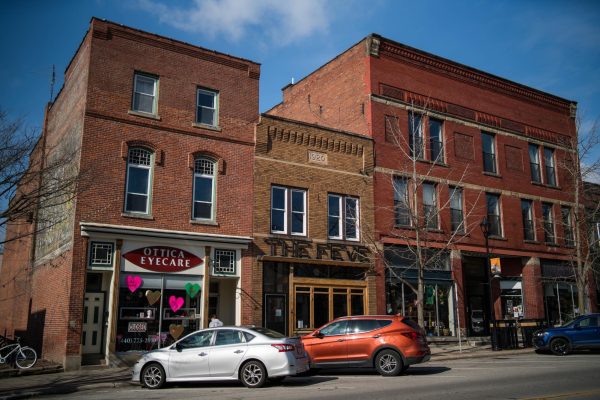Low Voter Turnout Marks Oberlin City Elections
Oberlin voters headed to the polls Nov. 2 to vote in the 2021 general election, which included several local city and county issues. There was a low voter turnout with only 19.97 percent of residents participating, compared with 28.58 percent in 2019, the last off-year election, and turnout was lowest in the precincts around and including Oberlin College.
A confluence of factors, including a ballot without any national issues and changes to the academic calendar, may explain the lower turnout among students.
The off-year election limited the ballot issues to concerns within Lorain County, which significantly diminished press coverage of the election.
A delayed start to the College’s academic year also meant that the first day of classes coincided with the October deadline for voter registration, making it difficult for students to meet the deadline. For Oberlin students, registering to vote each year is often a necessity because most students’ housing changes each year.
The League of Women Voters of Oberlin, a nonpartisan organization that normally staffs tables to help students register, was operating at a reduced capacity during move-in.
“On move-in day, we typically would have people stationed around all the dorms with clipboards,” said Alison Ricker, science librarian and member of the League of Women Voters. “We only had a table for first-years this time.”
According to Zeb Page, associate professor of Geology and member of Oberlin’s Voter Friendly Campus committee, the magnitude of the previous year’s national election as well as the circumstances of COVID-19 contributed to the low voter turnout among students.
“I think the fact that it was an off-year election, and that the timing [with registration] was about as bad as it could be — those factors came together and made for a low turnout,” Page said. “I also think part of it is burnout. We had such a huge, intense, national election, and we are also in what we hope is the tail end of a pandemic.”
However, Page stated that he doesn’t view the low voter turnout among students as a marker of students’ disengagement from voting.
“I personally don’t think that any of this is indicative of any trend,” he said. “We know that Oberlin students are strongly engaged. Even though the turnout from the 2020 election might have looked lower than normal, we know that juniors were at home, and many of them voted in their states.”
For Conservatory second-year Grace Tubbs, the lack of publicity prevented her from knowing an election was taking place at all. She described how she only came to learn about the election through overhearing conversations her classmates had on Election Day.
“I knew that some sort of election was going on from classmates talking about it on Election Day, but I didn’t know anything more than that,” Tubbs said. “The election didn’t seem to be publicized very well.”
Tubbs stated that it’s important that students vote in local elections, as Oberlin students constitute about a third of the town’s population.
“The College really makes up a large part of the town, and students have a responsibility to be involved in those elections,” she said.
The next opportunity for Oberlin students to vote will be in the May primaries for the fall 2022 midterm elections. Page expressed hope that the increased publicity surrounding these elections will increase voter turnout.
“Next [fall] we will have elections for all the major statewide offices: the governor, the secretary of state, the attorney general, as well as Senate and House races,” he said. “Primaries for all those races will be in the spring. … [Students] will have until early April to register to vote from their current address if they want to vote in the primary, which will be in May. I anticipate more action then. Because it will be a national election, the rhetoric will heat up, and I am hopeful that the ObieVotes mechanism will be up and running as we move toward the next year.”
Last week’s election gave Oberlin voters a chance to elect members of Oberlin City Council and Oberlin City Schools Board and decide whether to pass propositions 13, 39, and 40. They also voted on a number of countywide ballot issues.
In Proposition 13, voters were asked to decide whether Oberlin City Council could allow members to participate in proceedings remotely if it was deemed necessary in the future. With the lifting of COVID-19 restrictions, Ohio law currently stipulates that remote participation is not allowed, yet the Ohio Supreme Court decided that voters can authorize such participation through a charter.
Proposition 39 renews a tax which will generate $1.3 million for education technology in the Oberlin School District, and Proposition 40 renews a 0.75 percent income tax levy that would produce roughly $2.8 million to support art and music programs for Oberlin City Schools.
All seven members of Oberlin City Council were reelected, and in a five- person race for three seats on the Oberlin School Board, Farah L. Emeka, Jo-Anne Steggall, and Rosa Gadsden were elected.
Propositions 13, 39, and 40 also passed by healthy margins.
The deadline to register to vote in the May primaries is April 4, 2022.






